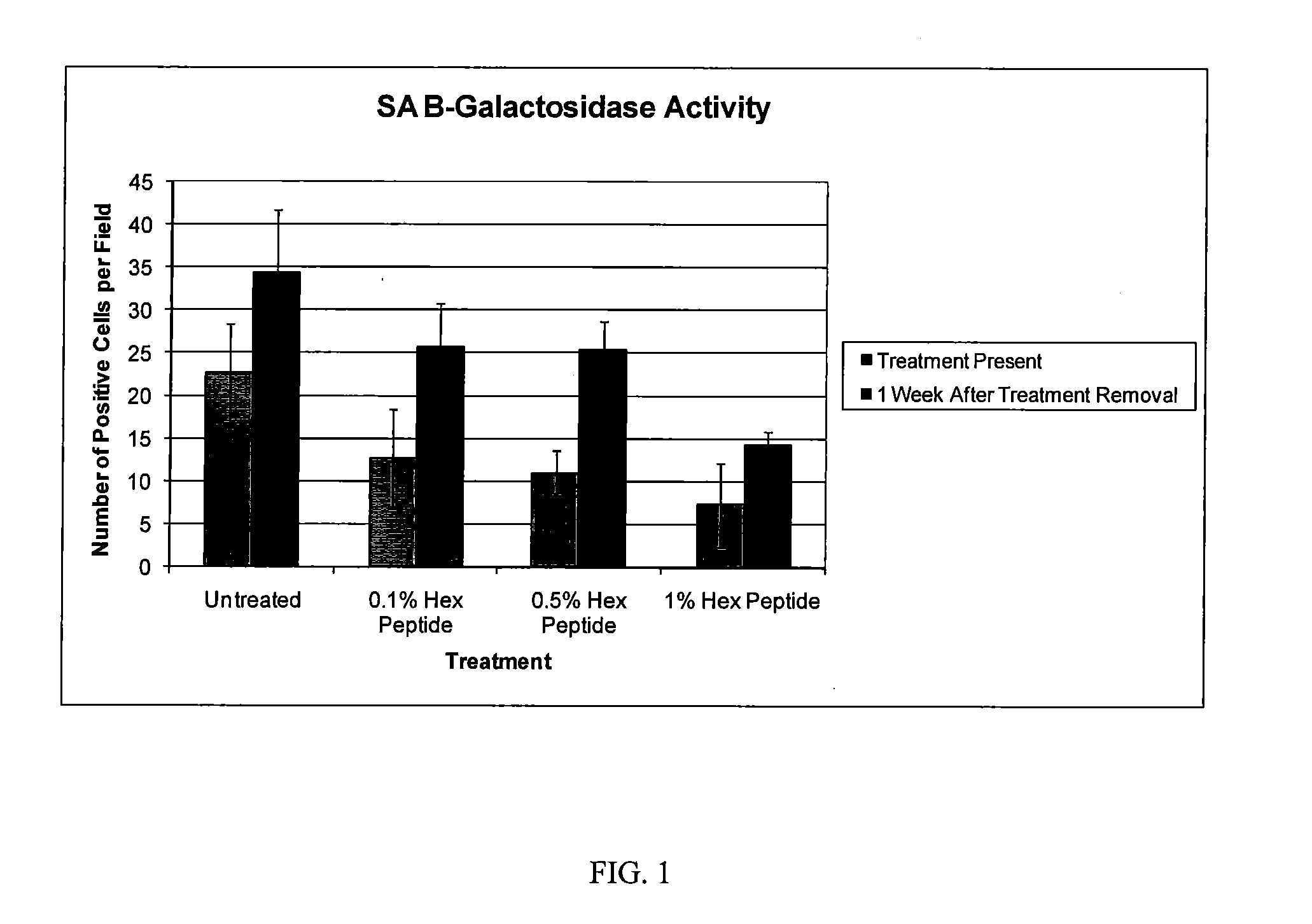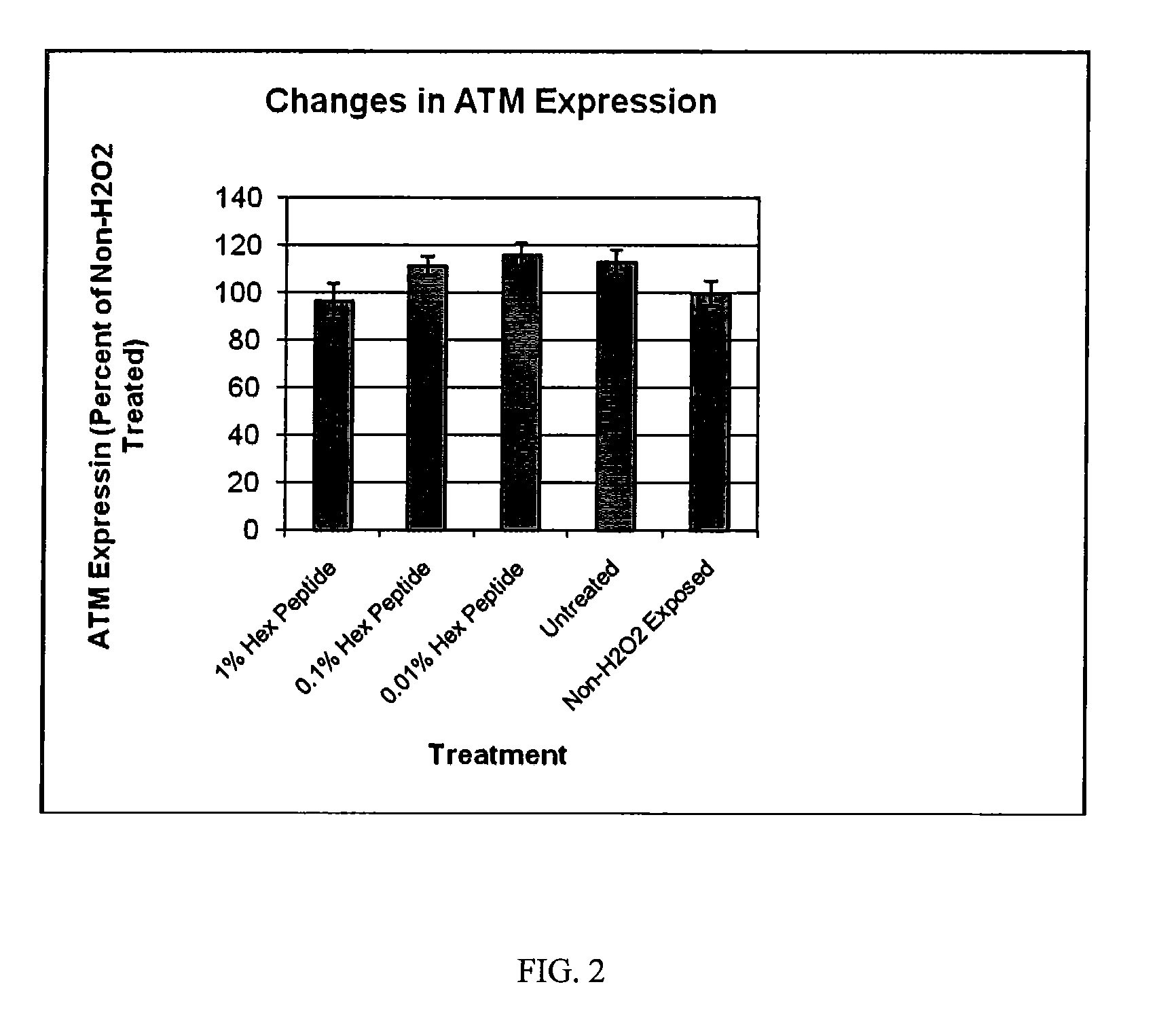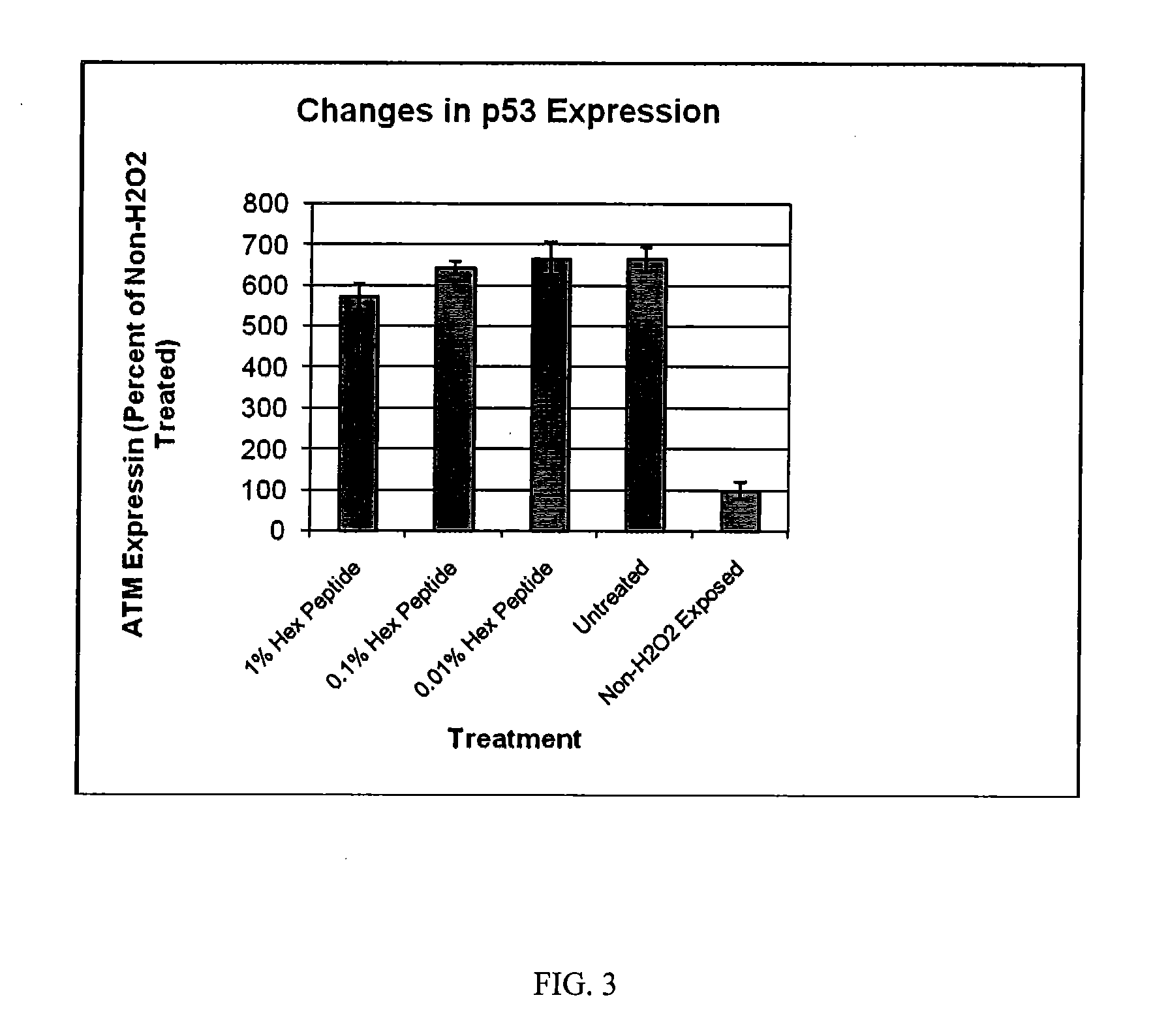Composition For Delaying Cellular Senescence
a cellular senescence and peptide technology, applied in the direction of hair cosmetics, peptide/protein ingredients, anti-noxious agents, etc., can solve the problems of not being desirable for topical therapeutic applications, not being able to disclose the amount of peptide used for wound healing purposes, and prior art materials for delaying cellular senescence such as nbd protein
- Summary
- Abstract
- Description
- Claims
- Application Information
AI Technical Summary
Benefits of technology
Problems solved by technology
Method used
Image
Examples
example 1
Isolation of Hexapeptide through Fermentation from Saccharomyces cerevisiae
[0059]Yeast (Saccharomyces cerevisiae) was grown according to the conditions outlined in Jazwinski S M. Methods in Enzymology 182(1990)154-174, which is incorporated in its entirety. Upon completion of the fermentation process, the yeast was isolated by filtration and resuspended in PBS. The microorganisms were ruptured by running the mixture through a microfluidizer to provide a mixture of ruptured yeast cells and cytoplasmic contents. The undissolved components, which included principally cell wall components, were removed by filtration to provide a mixture of water-soluble materials containing peptides, oligopeptides, sugars and polymeric sugars among other components.
[0060]The resulting yeast extract was first fractionated for molecular weight distribution using tangential flow filtration employing a membrane filter of nominal molecular weight cut-off at 3000 daltons. The resulting low molecular weight f...
example 2
Isolation of Hexapeptide Through Chemical Synthesis
[0061]The hexapeptide described in Example 1 was also synthesized using solid state peptide synthesis techniques well-known to those skilled in the art. The peptide synthesized via solid state synthesis was isolated with a purity of greater than 95% as determined by HPLC chromatography.
example 3
Delayed Senescence in Intrinsically-Aged Dermal Fibroblasts Measured by SA-β-Gal Expression
[0062]The peptide isolated from Example 2 was employed to examine the ability of the peptide to delay senescence in dermal fibroblasts aged through a series of population doublings.
Fibroblast Cell Culture
[0063]Human neonatal fibroblasts were obtained after primary culture (passage 1) and seeded into a set of T-75 flasks in 3 ml / flask of Fibroblast Growth Media (FGM) and grown at 37±2° C. and 5±1% CO2. The cells were expanded through 6 passages (one passage was defined as growing the cells until the flask was confluent and then splitting the cells 1:2, thus one passage was roughly equal to one population doubling). After the 6th passage, the fibroblasts were split into different treatment groups and treated with the various test materials through passage 18. At passage 18 a portion of the fibroblasts were used to assay changes in Senescence Associated-β-Galactosidase (SA-β-Gal), while the remai...
PUM
| Property | Measurement | Unit |
|---|---|---|
| molecular weight | aaaaa | aaaaa |
| pH | aaaaa | aaaaa |
| pH | aaaaa | aaaaa |
Abstract
Description
Claims
Application Information
 Login to View More
Login to View More - R&D
- Intellectual Property
- Life Sciences
- Materials
- Tech Scout
- Unparalleled Data Quality
- Higher Quality Content
- 60% Fewer Hallucinations
Browse by: Latest US Patents, China's latest patents, Technical Efficacy Thesaurus, Application Domain, Technology Topic, Popular Technical Reports.
© 2025 PatSnap. All rights reserved.Legal|Privacy policy|Modern Slavery Act Transparency Statement|Sitemap|About US| Contact US: help@patsnap.com



